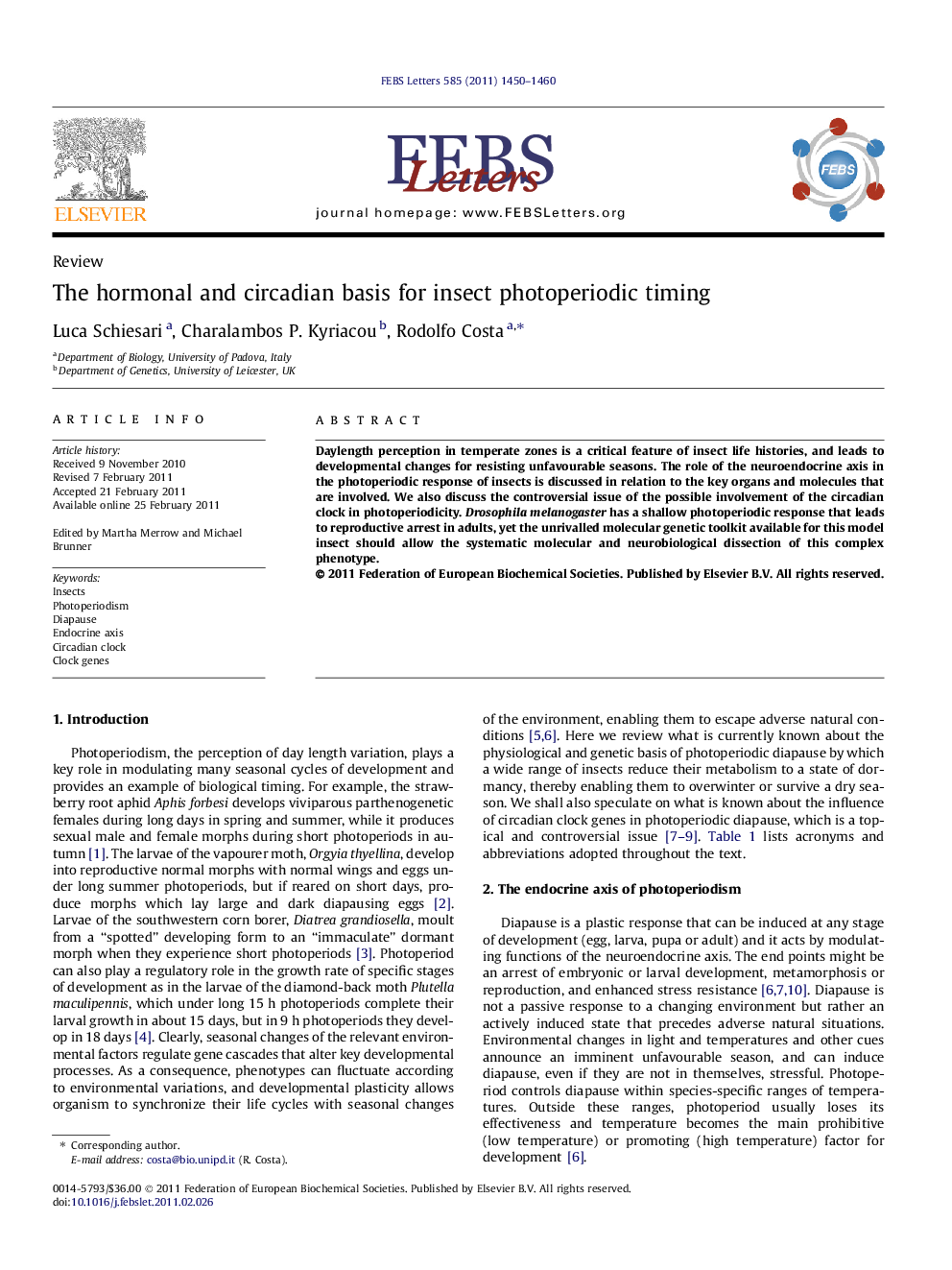| Article ID | Journal | Published Year | Pages | File Type |
|---|---|---|---|---|
| 2048099 | FEBS Letters | 2011 | 11 Pages |
Abstract
Daylength perception in temperate zones is a critical feature of insect life histories, and leads to developmental changes for resisting unfavourable seasons. The role of the neuroendocrine axis in the photoperiodic response of insects is discussed in relation to the key organs and molecules that are involved. We also discuss the controversial issue of the possible involvement of the circadian clock in photoperiodicity. Drosophila melanogaster has a shallow photoperiodic response that leads to reproductive arrest in adults, yet the unrivalled molecular genetic toolkit available for this model insect should allow the systematic molecular and neurobiological dissection of this complex phenotype.
Related Topics
Life Sciences
Agricultural and Biological Sciences
Plant Science
Authors
Luca Schiesari, Charalambos P. Kyriacou, Rodolfo Costa,
